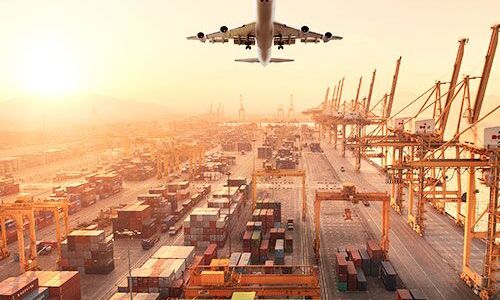While polyurethane polymers are used for a vast array of applications, their production method can be broken into three distinct phases. First, the bulk polymer product is made. Next, the polymer is exposed to various processing steps. Finally, the polymer is transformed into its final product and shipped. This production process can be illustrated by looking at the continuous production of polyurethane foams. Polymer reactions 1. At the start of polyurethane foam production, the reacting raw materials are held as liquids in large, stainless steel tanks. These tanks are equipped with agitators to keep the materials fluid. A metering device is attached to the tanks so that the appropriate amount of reactive material can be pumped out. A typical ratio of polyol to diisocyanate is 1:2. Since the ratio of the component materials produces polymers with varying characteristics, it is strictly controlled. 2. The reacting materials are passed through a heat exchanger as they are pumped into pipes. The exchanger adjusts the temperature to the reactive level. Inside the pipes, the polymerization reaction occurs. By the time the polymerizing liquid gets to the end of the pipe, the polyurethane is already formed. On one end of the pipe is a dispensing head for the polymer. Processing 3. The dispensing head is hooked up to the processing line. For the production of rigid polyurethane foam insulation, a roll of baking paper is spooled at the start of the processing line. This paper is moved along a conveyor and brought under the dispensing head. 4. As the paper passes under, polyurethane is blown onto it. As the polymer is dispensed, it is mixed with carbon dioxide which causes it to expand. It continues to rise as it moves along the conveyor. (The sheet of polyurethane is known as a bun because it "rises" like dough.) 5. After the expansion reaction begins, a second top layer of paper is rolled on. Additionally, side papers may also be rolled into the process. Each layer of paper contains the polyurethane foam giving it shape. The rigid foam is passed through a series of panels that control the width and height of the foam bun. As they travel through this section of the production line, they are typically dried. 6. At the end of the production line, the foam insulation is cut with an automatic saw to the desired length. The foam bun is then conveyored to the final processing steps that include packaging, stacking, and shipping. Quality Control To ensure the quality of the polyurethane material, producers monitor the product during all phases of production. These inspections begin with an evaluation of the incoming raw materials by quality control chemists. They test various chemical and physical characteristics using established methods. Some of characteristics that are tested include the pH, specific gravity, and viscosity or thickness. Additionally, appearance, color, and odor may also be examined. Manufacturers have found that only by strictly controlling the quality at the start of production can they ensure that a consistent finished product will be achieved. After production, the polyurethane product is tested. Polyurethane coating products are evaluated in the same way the initial raw materials are checked. Also, characteristics like dry time, film thickness, and hardness are tested. Polyurethane fibers are tested for things such as elasticity, resilience, and absorbency. Polyurethane foams are checked to ensure they have the proper density, resistance, and flexibility.
